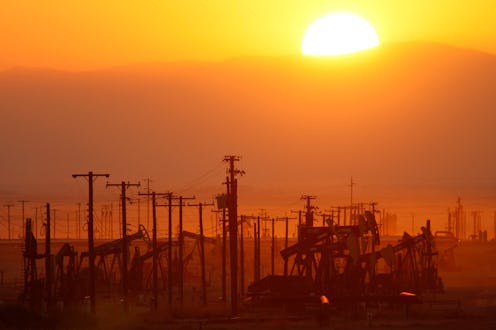News
This Was the Most Alarming Trend of the Last Year
If you're looking for a good scary story to read, have I got the one for you. This week, the National Oceanic and Atmospheric Administration (NOAA) released its annual State of the Climate report. The document compiles research from 425 scientists in 57 countries, revealing that the world saw one of its ten hottest years on record in 2013. Several countries noted high temperatures above or near their previous records, including Antarctica. Oceans warmed, atmospheric greenhouse gases increased, and cyclones were both more frequent and scarier than usual. That is to say: things are not looking good for the planet right now.
"In some ways this effort can be viewed as the 'annual physical' of the climate system," write the lead authors at the beginning of the 257-page document. Needless to say, the report goes into great detail, with sections covering the oceans, the tropics, the Arctic, and Antarctica in addition to sections on regional climates and the state of the world at large. Fortuitously, the 24th edition of the NOAA report comes out just months after from the Fifth Assessment Report of the Intergovernmental Panel on Climate Change and the U.S. National Climate Assessment. We've got a lot of data for 2013, and the three comprehensive reports all come to a similar conclusion: the world is a pretty scary place.
According to the report, last year was one of the warmest years on record. The analysis used four different datasets, so it's difficult to pin down exactly how warm that is, but suffice it to say that 2013 was between the second- and sixth-warmest years for land temperature ever recorded. The seas didn't do much better, as sea surface temperature in 2013 was also in the top 10, with the north Pacific marking it's highest-ever surface temperature. The levels of those oceans also continued to rise at the same rate they've been rising for the last 20 years, and the extent of Arctic ice was at its sixth-lowest level since that metric was first recorded in 1979. (Bizarrely, Antarctic ice actually increased to a record high in 2013, despite record high temperatures at the South Pole.)
The authors are in agreement about the cause of the most alarming trend since beard gardens: greenhouse gases. Those gases – carbon dioxide, methane, and nitrous oxide – hit record average highs last year. The highest-ever recorded concentration of those gases was also noted, at Hawaii's Mauna Loa Observatory on May 9. The paper is only a record of what's happened, so it gives no suggestions as to what you can do to help. But maybe consider riding your bike to work tomorrow.
